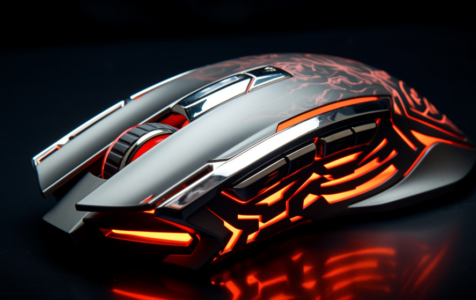If your mouse is not working on your laptop or the keyboard seems off on a Windows system, specific checks and adjustments might be necessary. This article provides a structured approach to addressing common mouse and keyboard issues. Don’t worry if some terms sound unfamiliar; we’ve provided additional explanations to help guide you. Whether you’re using a mouse that connects with a wire, one that connects without wires, or Bluetooth devices, the following steps will guide you through the troubleshooting process.
Basic Connectivity Checks
USB is a common type of connection for devices like mice and keyboards to a computer. When we mention “USB hubs,” we’re talking about devices that let you connect multiple USB devices to a single USB port on your computer. However, some of these hubs lack an independent power source and might not provide enough power for your devices to function correctly.
- Ensure the device is properly connected and powered.
- For USB connections, unplug and replug. Test different USB ports if necessary.
- Avoid using unpowered USB hubs. Connect devices directly to the PC’s USB port.
- Examine device cables for damages.
- For battery-operated devices, ensure they’re charged or use fresh batteries.
- Keep devices clean, especially keys and sensors.
Wireless Device Checks
“Bluetooth” is a technology that allows devices to connect wirelessly to your computer. “Pairing” is the term used to describe the process of connecting Bluetooth devices to each other.
- The reset button can help reestablish a connection.
- Unplug and replug USB wireless receivers to reset the connection.
- For Bluetooth devices, ensure they are paired correctly.
Test on Another PC
By testing your mouse or keyboard on another computer, you can determine whether the problem originates from the device itself or is specific to your laptop.
Expert Tip: For smoother PC performance, consider using a PC optimization tool. It handles junk files, incorrect settings, and harmful apps. Make sure it's right for your system, and always check the EULA and Privacy Policy.
Special offer. About Outbyte, uninstall instructions, EULA, Privacy Policy.
- Test the device on a different computer to ascertain if it’s the device or your PC causing issues.
- Ensure the appropriate drivers are installed on the second computer.
Driver and System Updates
Think of “drivers” as small software pieces that allow your computer and the device (like a mouse) to communicate effectively. Sometimes, these need updates to function correctly. The “device manager” is a tool on your computer where you can manage and update these drivers.
- Keep Windows and device drivers updated.
- Check for updates via the taskbar.
- For manual updates, use “device manager.”
Wireless Mouse Specifics
If you’re using a wireless mouse, there are specific checks you should perform. Bluetooth is one way these mice connect, while others use a small USB device that you plug into your computer.
- Confirm Bluetooth connectivity. If it’s unpaired, follow steps to reconnect.
- Switch USB ports if you suspect port issues.
- Use available tools for easy driver updates. For example, Outbyte Driver Updater is one such tool.
- Regularly clean your mouse and use a suitable non-reflective surface.
Laptop Touchpad Troubleshooting
The “touchpad” is the flat, touch-sensitive area on laptops used to move the cursor and perform mouse clicks.
- If the touchpad is unresponsive, ensure the computer isn’t frozen.
- Some laptops have keys to enable/disable the touchpad.
- Check mouse/touchpad settings or consult a specialist if issues persist.
USB Mouse Troubleshooting on Windows 10
“BIOS settings” are basic settings that your computer uses before Windows starts up. “Power management settings” determine how your computer saves energy, which might affect how your devices function.
- Ensure power sources are adequate for wireless mice.
- Securely connect the USB mouse and test on different ports or systems if necessary.
- Update drivers or reinstall them if needed.
- Adjust features like “fast startup,” BIOS settings, and power management settings.
- Regularly update Windows.
Conclusion
Most mouse and keyboard issues can be resolved through basic troubleshooting. Stay updated, keep devices clean, and ensure proper connectivity for optimal performance. For persistent problems, consider using tools or consulting specialists.
